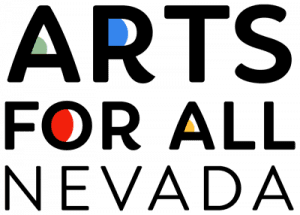Summarized from an article written by Patti Digh.
Use the people-first rule: “the man who is blind” not “the blind man.”
Avoid terminology like “suffers from,” “afflicted with” or “victim of,” all of which cast disabilities as a negative. “Suffers from” indicates ongoing pain and torment, which is no more the case for most people with disabilities as it is for most people without disabilities. “Afflicted with” denotes a disease, which most disabilities are not. “Victim of” implies a crime is being committed on the person who has a disability.
Do not use “wheelchair-bound” or “confined to a wheelchair.” People see their wheelchairs as convenient modes of transportation, not prisons, and the “bound/confined” phrase belies the fact that many people with motor disabilities engage in activities without their wheelchairs, including driving and sleeping. The proper phrase is “uses a wheelchair.”
Use “disability” not “handicap.” The word “handicap” derives from the phrase “cap in hand,” referring to a beggar, and is despised by most people with disabilities. Other terms to avoid: “physically/mentally challenged” (who isn’t?) “cripple” and “crippled.”
Use “nondisabled” or “people without disabilities.” The terms “normal” and “whole” are inappropriate and inaccurate. Most disabilities are not a disease. Do not call a person with a disability a “patient” unless referring to a hospital setting. In an occupational and physical therapy context, “client” is preferred.
Some diseases, by legal definition, are considered disabilities. Victimization imagery (“AIDS victims”) or defining the person by the disease (“she is a diabetic”) is still inappropriate. Use “person with diabetes” or “people living with AIDS.”
“Blind” refers to a total loss of eyesight; “low vision” or “visual disability” is more accurate for people who have some degree of sight. Avoid “non-sighted.”
People who consider themselves part of Deaf culture refer to themselves as “Deaf” with a capital “D.” Because their culture derives from their language, they may be identified as you would other cultural entities, i.e. “Asian-Americans,” “people with disabilities.”
For people with speech disabilities, avoid “mute,” “dumb,” or “speech impediment.” Avoid “deformed,” “deformity” and “birth defect.” A person may be “born without arms” or “has a congenital disability,” but is not defective.
Down syndrome is a chromosomal condition that causes developmental disability. Use “person with Down syndrome.” Avoid “mongol” or “mongoloid.”
Mental disabilities include cognitive, psychiatric and learning disabilities and physical head trauma. Avoid “mentally retarded,” “insane,” “slow learner,” “learning disabled” and “brain-damaged.”
Cerebral palsy is a disability resulting from damage to the brain during birth that causes muscle coordination issues. Avoid “palsied” and “spastic.”
Avoid “dwarf” or “midget.” Some groups prefer “little people,” but it’s best to use “person of short stature.”
A seizure is an episode caused by a sudden disturbance in the brain. If seizures are recurrent, it is called a seizure disorder. Use “person with epilepsy” or “child with a seizure disorder.” Avoid “epileptic,” either as a noun or adjective.
Quadriplegia is a substantial loss of function in all four extremities. Paraplegia is a substantial loss of function in the lower part of the body. Use “man with paraplegia” or “she has quadriplegia.” Avoid “paraplegic” or “quadriplegic” as either a noun or adjective.
These suggestions may be helpful in planning arts activities, events or special programs for people with the following disabilities:
General Disability
Attention Deficit Disorder
Blindness
Deafness
Mental Illness
Intellectual Disability
Mobility Limitations
Traumatic Brain Injury


Leave A Comment